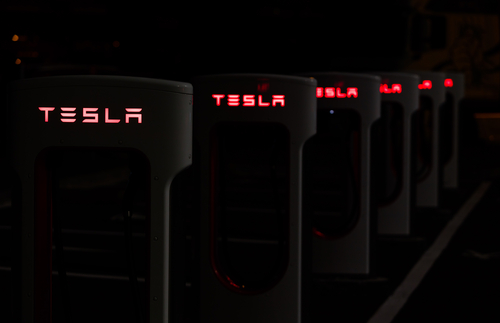Key Takeaways
- Tesla FSD Beta moved from radar to vision-based AI for better urban driving.
- Real-world edge cases still challenge Tesla FSD Beta’s reliability.
- Regulators keep a close watch on safety and performance.
- Regular updates have reduced crash frequency but high promises remain.
- As V14 nears, Tesla FSD Beta aims to balance innovation with safety.
Tesla FSD Beta Changed the Game
When Tesla launched FSD Beta V10 in 2021, it switched to a vision-only approach. Instead of radar, cameras and neural nets power driving decisions. As a result, the car “sees” more like a human. Moreover, this shift improved handling on city streets. For example, the system now spots pedestrians more quickly. Even so, real-world testing revealed rare but serious edge-case failures. Thus, Tesla learned that vision AI alone still needs more training in unusual scenarios.
By narrowing its focus to cameras, Tesla cut hardware complexity. In addition, software updates roll out faster. Since then, each update refined how the car reads road signs, lane markings and traffic lights. Consequently, the driving experience feels smoother than before. Yet, Tesla FSD Beta still confronts sudden shadows and odd road layouts. Therefore, the company fine-tunes neural networks every month.
Tesla FSD Beta Faces Real-World Tests
In busy cities, many surprises can appear. For instance, a shopper might cross outside a crosswalk. Or construction cones could block a lane. In these moments, Tesla FSD Beta must decide quickly. Sometimes the system handles them well. Other times, it hesitates or brakes too soon. However, crashes remain rare. In fact, Tesla reports a low crash rate per mile on FSD Beta. Nevertheless, regulators question whether that data fully reflects real roads.
Meanwhile, various agencies monitor Tesla’s performance. They demand clear proof that the system stays safe. For example, regulators ask for detailed crash logs. Moreover, they request footage to study system responses. While Tesla shares some data, critics want more transparency. At the same time, new regulations may require additional brakes in truly complex situations. Consequently, Tesla adapts each update to meet both safety and legal demands.
Tesla FSD Beta Improves Safety with Updates
Since V10, Tesla has released many versions up to V13. Each one adds new AI training and code changes. As a result, Tesla FSD Beta handles freeway merges more smoothly now. Additionally, it recognizes parked cars earlier. In turn, sudden stops happen less often. Furthermore, cameras now better spot cyclists and motorcyclists at intersections.
However, promises have run ahead of reality. Elon Musk often teases full autonomy “soon,” so people grow eager. Yet, full hands-off driving still faces hurdles. Indeed, some drivers misuse FSD Beta by taking their hands off the wheel. Tesla counters this with stricter in-cabin monitoring. Now the car checks the driver’s attention more often. Thus, misuse drops and safety climbs.
Moreover, Tesla uses fleet data to spot new edge cases each day. For instance, a rare road marking in Europe tripped up the AI. Tesla then fed more images of that marking into its training set. Next, a software patch fixed the issue globally. Therefore, Tesla FSD Beta constantly evolves to match varied road rules and signs.
Tesla FSD Beta and the Road Ahead
Looking ahead, Tesla plans V14 for 2025. This update aims to refine urban driving even more. It will add deeper neural nets and better scene understanding. As a result, the car should predict pedestrian moves earlier. In addition, it might learn to plan smoother routes around obstacles.
Yet, the push for full self-driving remains a balancing act. On one hand, Tesla leads in AI innovation. On the other, safety regulators set strict guidelines. Tesla must prove its system truly works in all conditions. For example, it must handle heavy rain and snow without failure. Therefore, Tesla’s engineers run tests in diverse climates. Meanwhile, they simulate extreme cases that rarely occur.
In the broader industry, rivals are watching closely. If Tesla FSD Beta V14 delivers on its promises, it could reshape how we drive. Ride-hailing services might rely on fleets of driverless cars. Delivery trucks could run nonstop, saving time and money. However, until regulators sign off, humans still need to be ready to grab the wheel.
While challenges remain, Tesla FSD Beta shows steady progress. It started with a big leap to vision-based AI. Then it faced and overcame numerous real-world tests. Now each update pushes safety higher. Finally, with V14 on the horizon, Tesla balances its daring AI goals against the need to protect lives.
Frequently Asked Questions
What makes Tesla FSD Beta’s vision-based approach special?
Tesla replaced radar sensors with cameras and neural nets. This lets the car process visuals much like a human eye. As a result, it sees road details and traffic cues more accurately.
How safe is Tesla FSD Beta on city streets?
Overall, crash rates on FSD Beta remain low. Regular updates reduce mistakes in urban settings. Still, rare edge-case scenarios can cause the system to hesitate or brake unexpectedly.
Will Tesla FSD Beta truly drive without human oversight?
Not yet. Despite bold promises, Tesla FSD Beta requires driver attention. Humans must stay ready to take control. Future updates aim to reduce human intervention, but safety rules still apply.
When can we expect Tesla FSD Beta V14?
Tesla plans to release V14 in 2025. This version should improve obstacle detection and route planning. However, full self-driving approval depends on passing strict safety checks.

